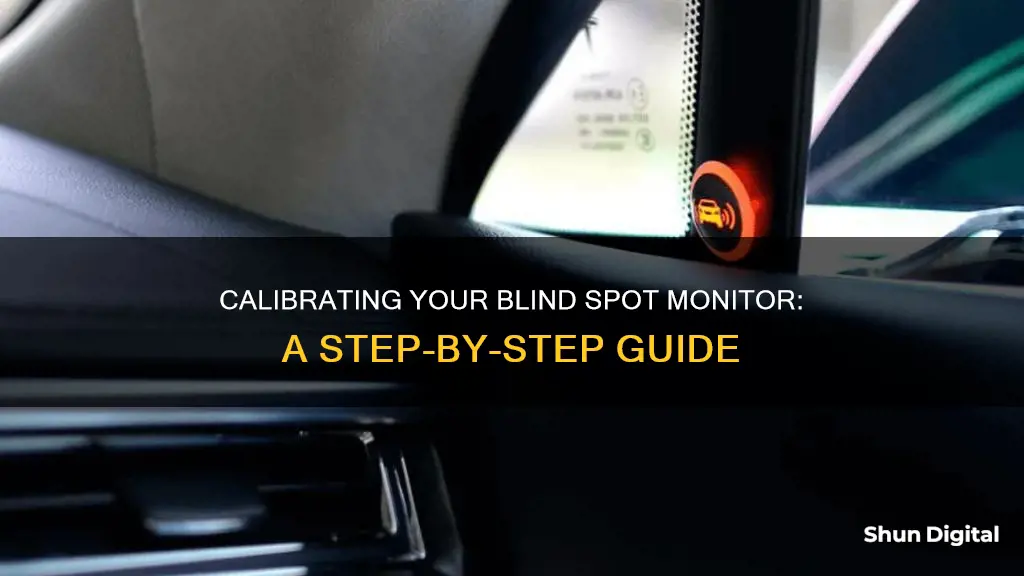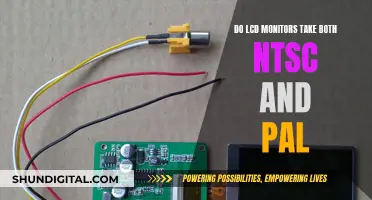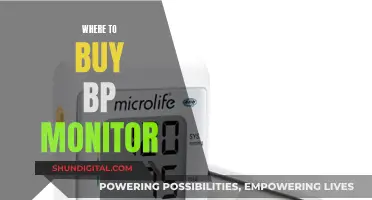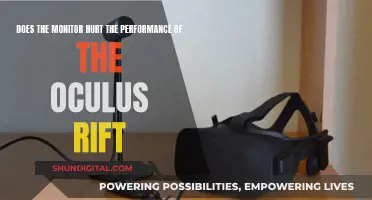
Blind spots are a serious safety concern for drivers, and calibrating a blind spot monitor is essential to ensure the system functions properly and accurately detects other vehicles. Blind spot monitoring systems use sensors, cameras, and radar technology to alert drivers of obstacles in their vehicle's blind spot, but these sensors can become misaligned, leading to hazardous errors. Calibration is the process of adjusting these sensors to the correct angle, level, and orientation, and it is necessary after events like collisions, wheel alignment changes, or replacing certain parts. While some systems have automatic calibration, others require manual calibration using special equipment, and it is recommended to have a professional perform the calibration to ensure safety and accuracy.
| Characteristics | Values |
|---|---|
| Purpose | To ensure the BSM sensors accurately detect and alert the driver of any obstacles in the vehicle's blind spot |
| Calibration process | Resetting the system, checking sensors, and ensuring the system is functioning properly |
| Calibration tools | ADAS calibration tools, ADAS targets, diagnostic scan tools, calibration software |
| Calibration time | Depends on the brand and model of the vehicle; can range from a few minutes to over an hour |
| Calibration cost | Typically ranges from $50 to $400, but can be more depending on the vehicle and complexity of the calibration |
| Sensor location | Usually on the sides of the vehicle, behind the rear bumper, in the quarter panel, or behind the front bumper |
| Sensor technology | Radar, sonar, lidar, or cameras |
| Indicator type | Visual (e.g. LED lights) and/or audible (e.g. alarm or beeps) |
| Calibration requirements | Regular intervals, after certain vehicle maintenance or repairs, or if the radar is suspected to be out of alignment |
What You'll Learn

Calibration tools and methods
Calibration of a blind spot monitor is important to ensure the safety feature functions properly and accurately detects other vehicles. Blind spot monitors use sensors to detect the presence of other vehicles in the driver's blind spot and then provide a warning. If the monitor is not properly calibrated, other vehicles in the blind spot may go undetected, or false alerts may be triggered, distracting the driver and potentially leading to an accident.
Calibration of a blind spot monitor typically involves resetting the system, checking sensors, and ensuring the system is functioning correctly. The exact steps for calibrating a blind spot monitor may vary depending on the vehicle brand and model, so it is important to refer to the vehicle's manual for detailed instructions. Here is a general overview of the process:
- Place the vehicle in a specified environment and turn off the engine.
- Locate the blind spot monitoring sensors on the vehicle. These sensors are usually found on the side mirrors or rear bumper.
- Inspect the sensors for any damage or debris that may be blocking their line of sight. Clean the sensors if necessary.
- Ensure that the blind spot monitoring system is turned on and functioning properly.
- Reset the system. This can often be done by disconnecting the vehicle battery for a few minutes and then reconnecting it.
- Test the system by driving in a safe and controlled environment, such as an empty parking lot. Pay attention to the blind spot warning light and ensure it activates when another vehicle enters your blind spot.
There are several tools that may be required for blind spot monitor calibration:
- ADAS calibration tools: These are specialised tools used for calibrating advanced driver assistance systems, such as blind spot monitors. Examples include X-431 ADAS PRO PLUS, X-431 ADAS Mobile, and X-431 ADAS LITE.
- ADAS targets: These are used to align radar sensors and camera systems to ensure they are accurately aimed at the correct location.
- Diagnostic scan tools: This tool is used to access the vehicle's onboard diagnostic system and retrieve any fault codes related to the blind spot monitoring system.
- Calibration software: Calibration software is used to initiate the calibration process and make any necessary adjustments to the blind spot monitoring system.
It is important to note that calibrating a blind spot monitor requires direct knowledge of the blind spot system sensors and their functionality. While some individuals may perform this process themselves, it is generally recommended to have a professional carry out the calibration to ensure it is done correctly and safely.
Understanding Monitor Sizes: Calculating the Perfect Display Dimensions
You may want to see also

The importance of regular calibration
Blind spot monitors are safety features that use sensors to detect the presence of other vehicles in a driver's blind spot and provide a warning. Calibration is important to ensure these monitors function properly and accurately detect other vehicles, which is crucial for vehicle safety. Without regular calibration, drivers risk being distracted by false alerts or not being alerted to other vehicles in their blind spot, which could lead to an accident.
Calibration is especially important after certain events, such as a collision, which can cause sensors to become misaligned or damaged. Regular calibration can also help diagnose radar errors before they become a potential risk and ensure the system is functioning at its maximum potential.
The calibration process can vary depending on the vehicle brand and model, but typically involves resetting the system, checking sensors, and ensuring proper functioning. It is recommended to refer to the vehicle's manual for detailed instructions or seek the help of a professional.
In addition to enhancing safety, regular calibration can also increase the lifespan of the equipment. The radar sensors of blind spot detection systems are constantly exposed to the environment, which can cause errors or misalignment. Calibration helps to minimize damage and errors, ensuring the system lasts for years without issues.
Furthermore, regular calibration can be cost-effective in the long run. An uncalibrated system can lead to permanent system failure, requiring a complete replacement. By calibrating the system regularly, drivers can avoid the costly expense of a new system and ensure their safety on the road.
Overall, regular calibration of blind spot monitors is essential for maintaining proper functioning, enhancing safety, increasing equipment lifespan, and reducing potential costs associated with system failure. It is a critical step in ensuring the reliability and accuracy of these important safety features.
Dismantling a ViewSonic LCD Monitor: Step-by-Step Guide
You may want to see also

How to identify and locate sensors
Blind spot sensors are usually located on the sides of a vehicle, behind the rear bumper cover, in the quarter panel, and sometimes behind the front bumper. They can also be found on the side mirrors or rear bumper.
To identify and locate the sensors, you should first consult your vehicle's manual. Some sensors have a marking on them for easy identification. Ensure that the sensor is visible and unobstructed. If not, clean the sensor and remove any metals blocking it.
Once you have located the sensor, inspect it for any damage or debris that may be blocking its line of sight. If necessary, clean the sensor.
It is important to note that the exact location of blind spot sensors may vary depending on the vehicle brand and model.
Large Monitors: A Nausea Trigger?
You may want to see also

The process of installing a calibration mat
Firstly, identify the location of the sensors. Blind spot sensors are typically found on the lateral or rear sides of vehicles, but some systems may have additional sensors at the front. Ensure that the sensors are visible and unobstructed. If necessary, clean the sensors and remove any metals blocking them.
Next, install the calibration mat. This mat helps reorient the radar sensor to its original position. Place the mat according to the instructions provided with your blind spot monitor kit. Ensure that the mat is positioned so that the sensor can easily detect it.
Once the mat is in place, check the alignment of the sensors. Some systems come with a protractor or angled arrow to measure the alignment. You will need to monitor the angle of the radar in relation to the car and the road, as well as the height of the radar from the road. Refer to your blind spot monitor's manual to determine the specific values for these measurements and make any necessary adjustments.
After adjusting the sensors, you can proceed to calibrate them. This step is more straightforward with a specialised calibration device, which uses computed algorithms to adjust the sensors automatically. However, manual calibration is also possible, although it carries more risk. Some companies offer paid calibration services if you prefer to leave this step to professionals.
Finally, test the system to ensure it is functioning correctly. You can use the calibration mat to verify that the sensors are properly aligned and the system is accurately detecting obstacles.
It is important to note that calibration mats are not always necessary for blind spot monitor installation. Some systems may use other methods for calibration, such as suspended plumb bobs at reference points to take measurements. However, if your system includes a calibration mat, it is important to install and use it correctly to ensure the accuracy and safety of your blind spot monitoring system.
Eye Care Monitors: ASUS's Innovation for Tired Eyes
You may want to see also

The cost of calibrating blind spot detection devices
Calibrating a blind spot monitor is important to ensure that the system functions properly and accurately detects other vehicles, enhancing safety and preventing collisions. While the process is not complex, it requires care and expertise, and the cost can vary depending on several factors.
Some service providers may offer a flat fee for calibration, while others may charge by the hour. Additionally, some vehicles may require more extensive calibration, which can increase the overall cost. It is worth noting that calibrating your blind spot monitor is crucial for your safety and the safety of other road users, and the cost of calibration is relatively minor compared to the potential consequences of an uncalibrated system.
Before proceeding with calibration, it is recommended to consult your vehicle's manual or a professional calibrator to determine the specific steps and requirements for your vehicle. They can provide accurate information and ensure that your blind spot sensors are functioning optimally.
Asus Monitor Warranty: Is It Transferable?
You may want to see also
Frequently asked questions
A blind spot monitor is a safety feature installed in vehicles that use sensors to detect the presence of other vehicles in the driver's blind spot and then provide a warning.
Calibration is important to ensure blind spot monitors function properly and accurately detect other vehicles, which is crucial for vehicle safety. If the monitor is not calibrated properly, it may fail to detect other vehicles in the blind spot or provide false alerts, distracting the driver and potentially leading to an accident.
It is recommended to calibrate your blind spot monitor at regular intervals, especially if your vehicle has been in an accident. Additionally, it is advisable to calibrate the radar sensor every 6 months, as regular bumps and driving can cause desynchronization.
Yes, calibrating a blind spot monitor is a process that can be performed by an individual with direct knowledge of the blind spot system sensors. However, it is best to refer to your vehicle's manual for detailed instructions, as the steps may vary depending on the brand and model of your car.
The tools required for calibration may vary depending on your vehicle and the type of blind spot monitor. In general, you will need a calibration device and a calibration mat. Some other common tools include a radar calibrating device, ADAS calibration tools, diagnostic scan tools, and calibration software.







